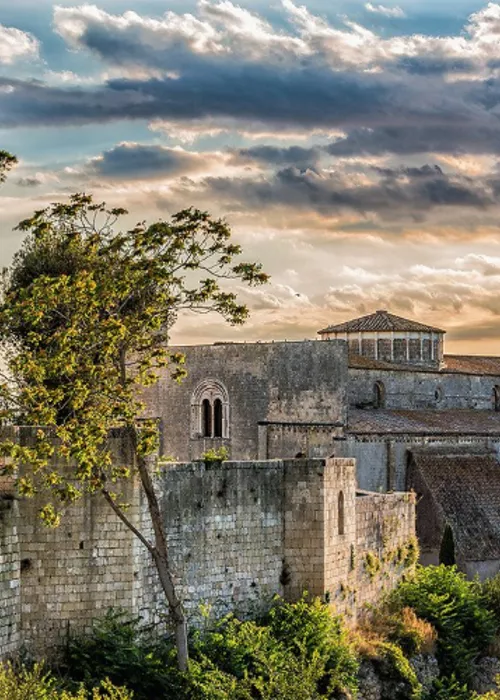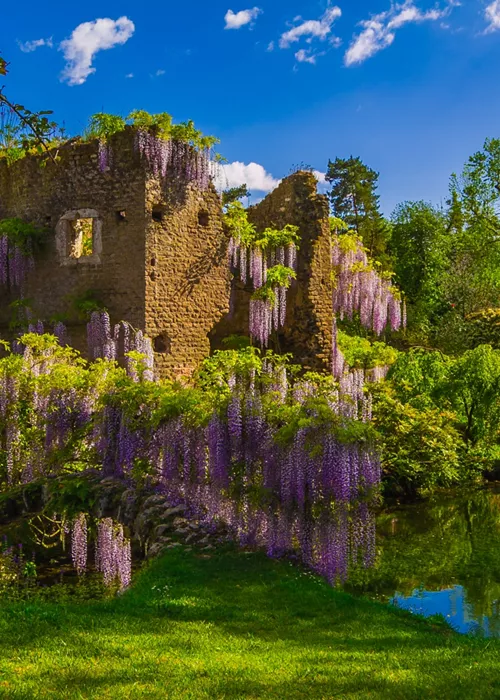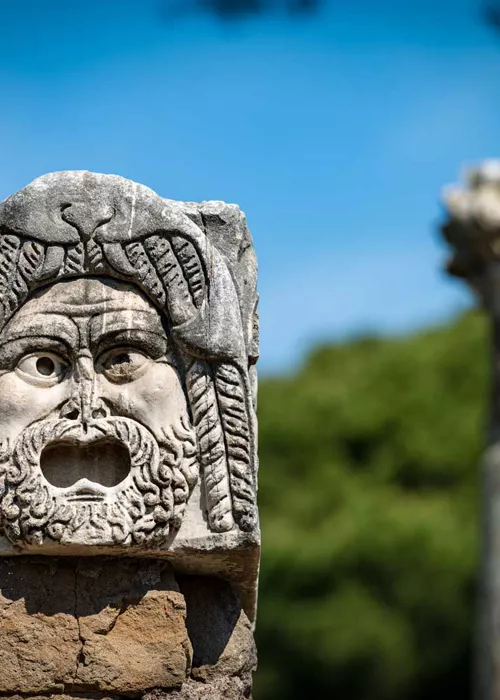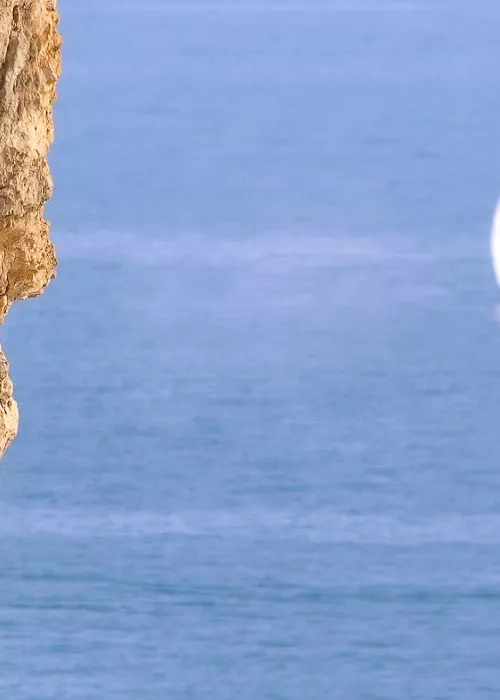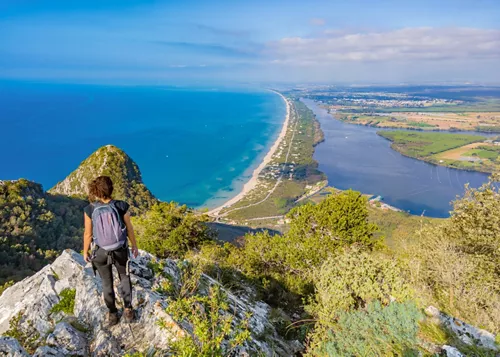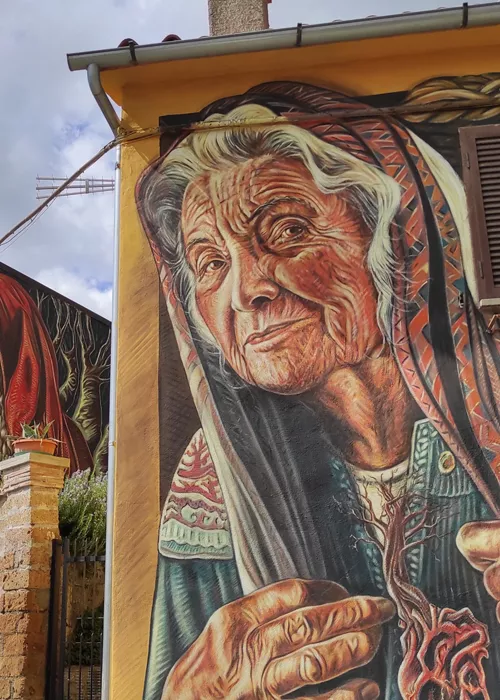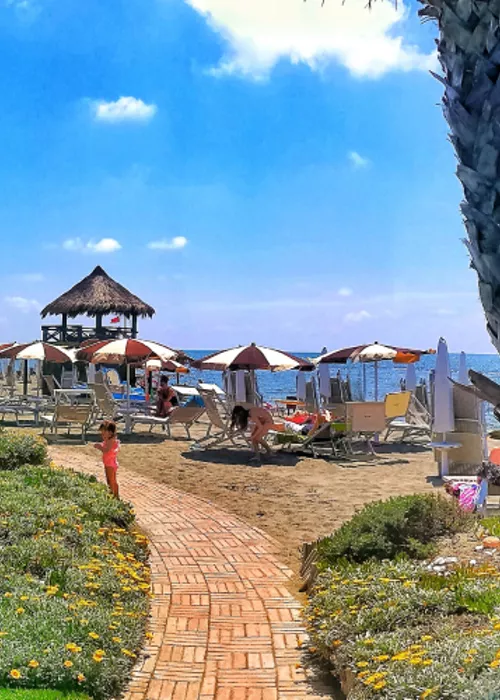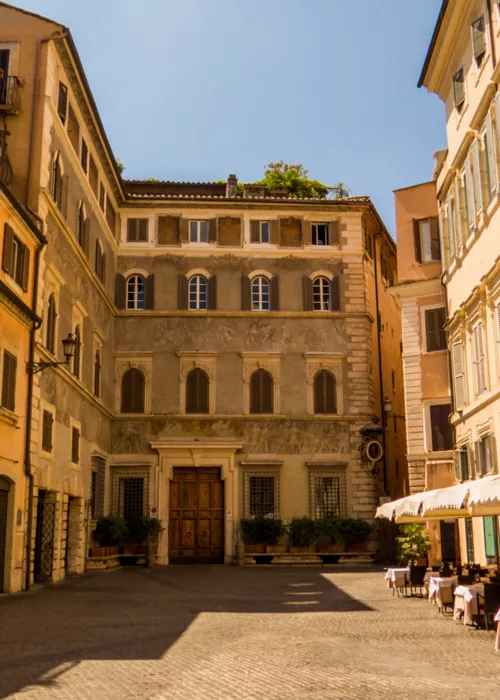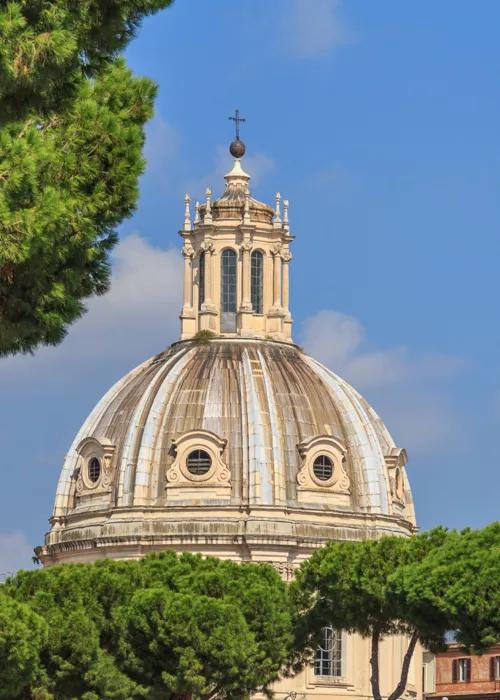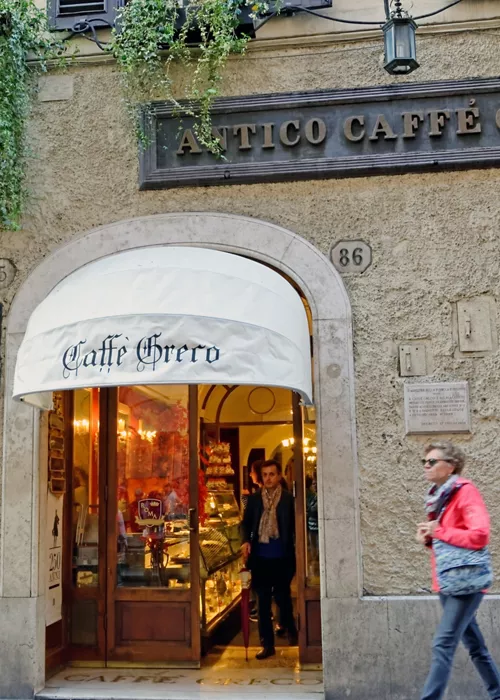Beyond Rome: Southern Lazio's most beautiful villages, from coast to countryside
11 minutes

While the saying may be 'all roads lead to Rome', it also raises the question; where did those roads start, and, more importantly for us as travellers, what stories have they crafted as they traversed the ancient empire? Eager to answer my own seemingly naive question, I set off on a journey from Rome to dive deeper into southern Lazio, a region often overlooked in favour of the country's ancient attraction-heavy capital, Rome.
From people watching in small squares serving as the village's 'living room' to witnessing fishermen flogging the catch of the day harbour-side at one of the country's oldest coastal borghi, heading south of Rome, I found villages that hadn't been lost to time, but who were writing their own, new stories.
While archaeological discoveries, museums of mosaics, and castle-crowned hilltops were in no short supply, the real magic wasn't only in the treasures left by long-gone legacies but also in the friendly 'buongiornos' echoed in the air when wandering narrow streets, the eager curators crafting acclaimed museums in remote outposts, and the forward-thinking chefs dishing-up culinary delights from reinvigorated aged-old recipes.
Perhaps, as I discovered, not all roads lead to Rome at all, and maybe, nowadays at least, these roads are best rambled in reverse, taking us as travellers on a journey into Lazio's fascinating past and present-day customs in the provinces of Latina and Frosinone.
Sermoneta

If you picture an Italian postcard of the perfect hilltop castle town, something similar to Sermoneta is likely being painted in your mind. While this seemingly small, mediaeval borgo (village) has been well restored and, in parts, reconstructed, the few hundred residents in its ancient core keep it feeling very much alive. I found a welcoming land of local residents dining with doors wide open, a cluster of churches turned art galleries, and of course, one of the country's most famed castles, all wrapped up in another Bandiera Arancione certified village.
Top 5 things not to miss
- Tour the grand and impressive Caetani Castle (open at weekends)
- Get lost in the mediaeval streets and alleyways
- Visit the churches-come-galleries for frescos and contemporary modern art
- Book a visit to The Gardens of Ninfa
- Marvel at the miniature world of Museo "C'era Una Volta"
My first glimpse of Sermoneta came on the train approach, a castle-defined village perched high on a hill, and I was certainly grateful I wouldn't need to trek up from the station like those starting the southern Via Francigena here would.
Arriving into the mediaeval core, shaped by defensive walls and the important Caetani Castle, the town's square was packed with people enjoying breakfast under bunting, decorated for a big weekend event approaching.
Most of the village dates back to the 13th, 14th, and 15th centuries, and I felt like I was walking through the Middle Ages, especially when passing under the wooden beamed covering of the 1446 Loggia dei Mercanti, an old hub of commercial activity. Far more extensive than it looked at first glance from afar, I quickly fell under the charm of the timeless streets and stories of influential past residents.

Of course, the story of Sermoneta is intricately linked with the Caetani (or Gaetani) family who lived here, their castle dominating the village, and much of the rest constructed by them. This noble mediaeval Italian family, who hailed from nearby Gaeta, were politically successful, most notable with the election of Pope Boniface VIII in 1294. While the castle is sadly closed during weekdays, meaning I wasn't able to enter inside, the photos I saw of it look as impressive as you'd imagine – making a weekend visit here highly recommended.
Luckily, with plenty more to see in the village, from the frescoes-filled interiors of the Chiesa di San Giuseppe and Oratorio dei Battenti to the small and intimate archaeological ceramics museum, I entwined myself with the culture and history of Sermoneta. Particularly fascinating was the Romanesque church of San Michele Arcangelo, the upstairs converted into a contemporary art gallery, while ancient frescoes can be found in the lower cave.
Another extraordinary and unexpected find was the Museo C'era Una Volta, tucked away in an almost cave-like building. The endless miniature works of Daniela Caruso are on display here, with fully animated tiny models and scenes of local activities coming to life with the flip of a switch. A truly fascinating place, established in 2000; I learned more about Daniela's work when she invited me to join her family for lunch.
Sat in the family's home, soaking up every moment of the incredibly hospitable invite, her mother delivered delicious dishes of bean soups, slowed-cooked meats, and lashings of wine to me as we discussed life in Sermoneta – a magical ending to a magical village.
Sermoneta: Useful information
Best time to visit: Sermoneta's mediaeval charm means summer can become rather busy, while the winters can feel a little exposed to the elements, making spring and autumn perhaps the most tempting times to visit. For a small destination, it has quite a packed event calendar throughout the year, so it's worthwhile seeing if there is an event worth timing your visit with – the Festa dei Fauni in March is one of the most famous.
How to get there: The nearest train station to Sermoneta is Latina (30-minutes from Rome or 17-minutes from Priveno-Fossanova). From here, local buses will take you to the village, avoiding the long walk and climb.
Gaeta

Jutting out from the mainland, and obscured from view by the rising greens of the Monte Orlando park, the Borgo of Gaeta sits free from its more modern and developed counterpart further along the bay. With a youthful energy thanks to the trendy bars teeming with mild revelry on a weekend evening, a relaxed atmosphere courtesy of the nearby golden-sand beaches, and, of course, the borgo's churches, ancient tower, and harbour-view restaurants, Gaeta isn't just a historic village to visit, but one where you can slow down and soak up a slice of modern Italy away from the main cities, in one of the 'I Borghi più Belli d'Italia' (most beautiful villages in Italy).
Top 5 things not to miss
- Explore the streets and waterfront promenade of the historic fortified borgo
- Visit the incredible churches, such as the Golden Chapel
- Marvel at the coastal-cliff facing split mountain in the Sanctuary of Montagna Spaccata
- Head to Serapo Beach for an aperitivo (cocktail) at sunset
- Soak in daily market life along Via della Indipendenza
Having spent the previous week exploring the inland and hilltop villages of Lazio, Gaeta intrigued me, as its coastal position was a stark contrast to everything I'd seen so far. With an overnight visit planned (you'll need at least one night, given the size and number of attractions), I set about exploring both the new and old parts of Gaeta, set against the backdrop of the Mediterranean Sea and arid mountains.
Desperate to dip my toes in the waters, I started my visit at Serapo Beach, a tranquil, curving bay of golden sands and lapping waves. From here, Monte Orlando, the green lung and hill that divides the new and old parts of the town, is fully visible.
Climbing the trails of the mausoleum-topped mount, I followed the signs to the Sanctuary of Montagna Spaccata – the split mountain. Arriving at the 11th-century sanctuary, built in honour of Saint Philip Neri, who it is said lived here, I was greeted by a narrow staircase descending through the divided towering rock, which goes down to the chapel before rising again to a breathtaking viewpoint out onto the sea through the crack.
Before leaving Monte Orlando, I descended to the equally beautiful lapping-waters of the Grotta del Turco, then climbed again further and higher; an incredible view down over Gaeta's castle (now used by the military and closed to the public) and streets awaited.

En route to the old coastal headland section of Gaeta, I detoured along Via dell'Indipendenza – an ancient Roman thoroughfare now teeming with locals picking up fruit and vegetables, bakeries dishing out typical pastries and pies, and independent traders selling their wares from stalls and shop fronts. The road runs parallel to the port, where the afternoon fish market was in full swing, following the arrival of the boats loaded high with the catch of the day.
Finally entering the borgo itself in the late afternoon, passing the ruins of the Roman cistern, I was glad I'd decided to spend a night here to squeeze everything in.
Of the historical and beautiful architecture I visited here, a few places truly stood out. The first, Santuario Della Santissima Annunziata, with its clock-baring facade, and pastel-blue interior, holds a magnificent treasure at its rear – the Cappella dell’Immacolata Concezione. Also known as the Cappella d'Oro (Golden Chapel), this Renaissance chapel has exquisite paintings by masters Scipione Pulzone and Giovanni Filippo Criscuolo, with the elaborate gold and gilded room having been blessed by Pope Pius IX. Secondly, the Basilica of Gaeta, and in particular the adjoining bell tower, of which construction began in 1148, with its various artistic styles, including Islamic details.
Another magnificent religious building, the Church of Saint Francis of Assisi, towers above, and although it's currently closed for restoration, from here, I enjoyed one of the best views over the village. With more museums and cathedrals to visit than I had time for, I could have happily extended my stay.
By night, Gaeta's old streets were buzzing far more than I expected. Trendy craft beer bars, table-clothed restaurant terraces, and chic cocktail clubs overflowed onto the streets with a predominantly young crowd. The salty sea breeze, the base of the music, and orange-glowing lights illuminating the stone streets providing the perfect setting to sip a Negroni late into the warm autumn evening.
Gaeta: Useful information
Best time to visit: Gaeta can feel packed during summer, given its coastal position, so I'd suggest staying in the spring or autumn, when you can still enjoy the beaches but with fewer crowds.
How to get there: The nearest train station is Formia-Gaeta, and from here, buses connect with the historic part of Gaeta, taking around 30-minutes.
Atina

Bundling together all that's great about Italy into a pocket-sized, yet still lively borgo, old Atina (an 'I Borghi più Belli d'Italia') feels a world away from its nearby modern counterpart. Once flanked by megalithic walls, now nearly lost to the flora of Santo Stefano Hill, this is a village that has seen its fair share of stories and artefacts – some of which are now displayed alongside the greatest archaeological collections in Rome. Families still live in palaces that have passed through generations, tables are often topped with dishes using the local cannellini beans, and everything tastes a little bit richer accompanied by a glass of Atina's acclaimed Cabernet – this is a place to slow down and savour the delectable views across the Valle di Comino.
Top 5 things not to miss
- Sample the local Cabernet wines in a vineyard
- Pop into the borgo's family-owned palaces for a prearranged visited
- Visit the archaeological museums of the village and Comino valley
- Head into the hills for panoramas and to see the megalithic walls
- Explore all the narrow streets of the historic centre
Arriving in Atina on an early Monday morning, clouds and mist still hung low over the Comino Valley as the morning sunshine slowly climbed above the mountains, starting to illuminate the vineyards and groves spread out before me.
I was also climbing, catching the magnificent sunrise vistas from the Cappella della Madonnella on the side of Santo Stefano Hill before venturing deep into the undergrowth to spot the megalithic walls.

By breakfast time, I was back in the main square, where the borgo's lively Monday morning market was in full swing, as it has been since the 16th century. Not just confined to the pretty main square, it spills out inside the walled village, with local produce and crafts a particular focus.
Strolling the streets of Atina, where plants cascaded from flower boxes on narrow alleys, I admired the grand-entrance gate of Porta dell'Assunta, the salmon-pink and slightly curved facade of the Chiesa Santa Maria Assunta and the 14th-century courtyard of the Ducal Palace of Atina before venturing to the archaeological museum.
Sadly, many of the oldest and most treasured discoveries found here and in the valley now live in the museums of Rome, and the slightly dated museum is eagerly awaiting its re-housing into a new, larger complex. Still, it provided an interesting overview of the megalithic archaeological site on the hill above, with recreations of the oldest finds, now housed in Rome.
With a few palaces in the village to visit, a testament to the noble families that have lived here and even owned the village outright, starting since the Cantelmo family rebuilt the hamlet after an earthquake in the 12th century, I set about exploring them.
I peeked into the Palazzo del Senatore (now a hotel) before venturing to a still family-owned palace-cum-private-home, where a grand dining room carpeted in Isola del Liri wallpaper (a nearby waterfall-shaped village) and a hidden, underground 18th-century chapel wowed. However, the greatest of the palaces, the gothic Palazzo Ducale, now serves as the town hall. Inside, I admired a giant Roman mosaic, the late 14th-century frescoes, and a very high-tech and interactive display of the local area.
Eager to explore the vineyards I'd spotted at sunrise, I headed deeper into the lower valley. Row upon row of, as I later learned, highly regarded Cabernet grapes, sprawled out around family homes and vineyard, and I knew I needed to taste it. Having earned DOP status (Protected Designation of Origin) for the quality of the grapes, the wines of Atina were unsurprisingly delicious, made even more special by witnessing the harvest, which runs from September to October.
Atina: Useful information
Best time to visit: Atina's wine harvest usually occurs in late September to mid-October, making this a delightful time to visit, although it's a year-round destination given visitor numbers never go too high – just be aware temperatures can soar in summer.
How to get there: To reach Atina from Arpino, you'll need to take a bus connection through Sora (check times to align in advance), or it's around a 30-minute drive with a car.
Article written about the experience of Daniel James Clarke - Dan Flying Solo.
Author: Daniel James Clarke - Dan Flying Solo


